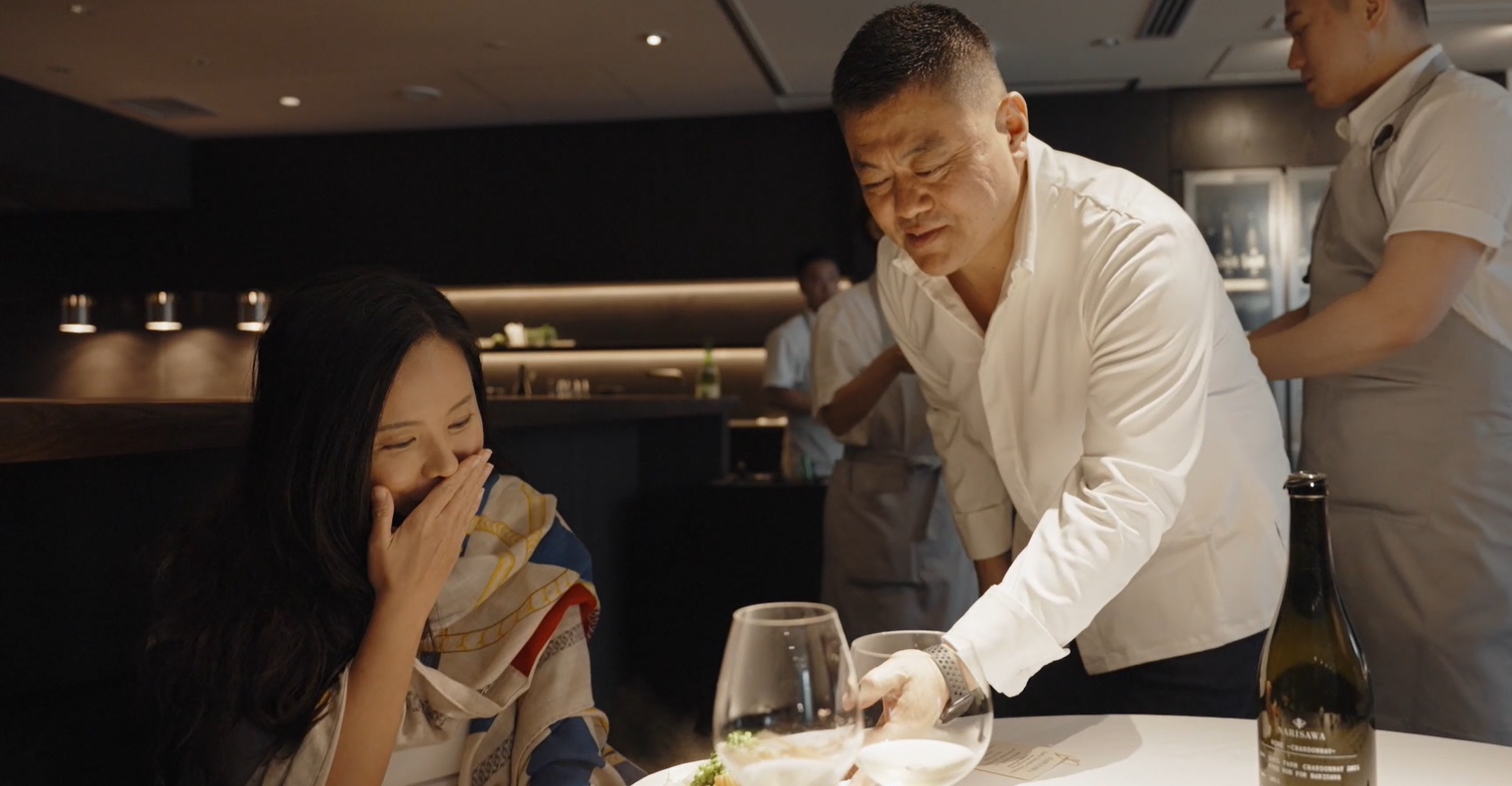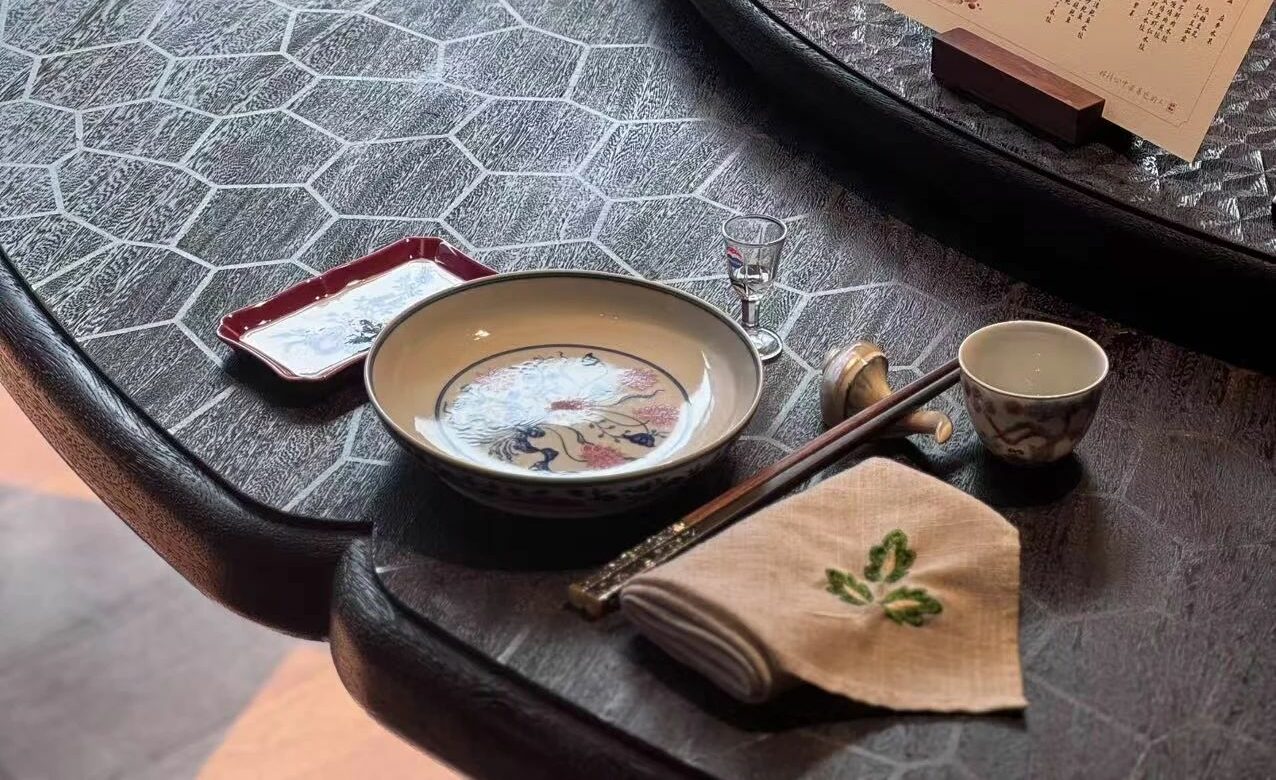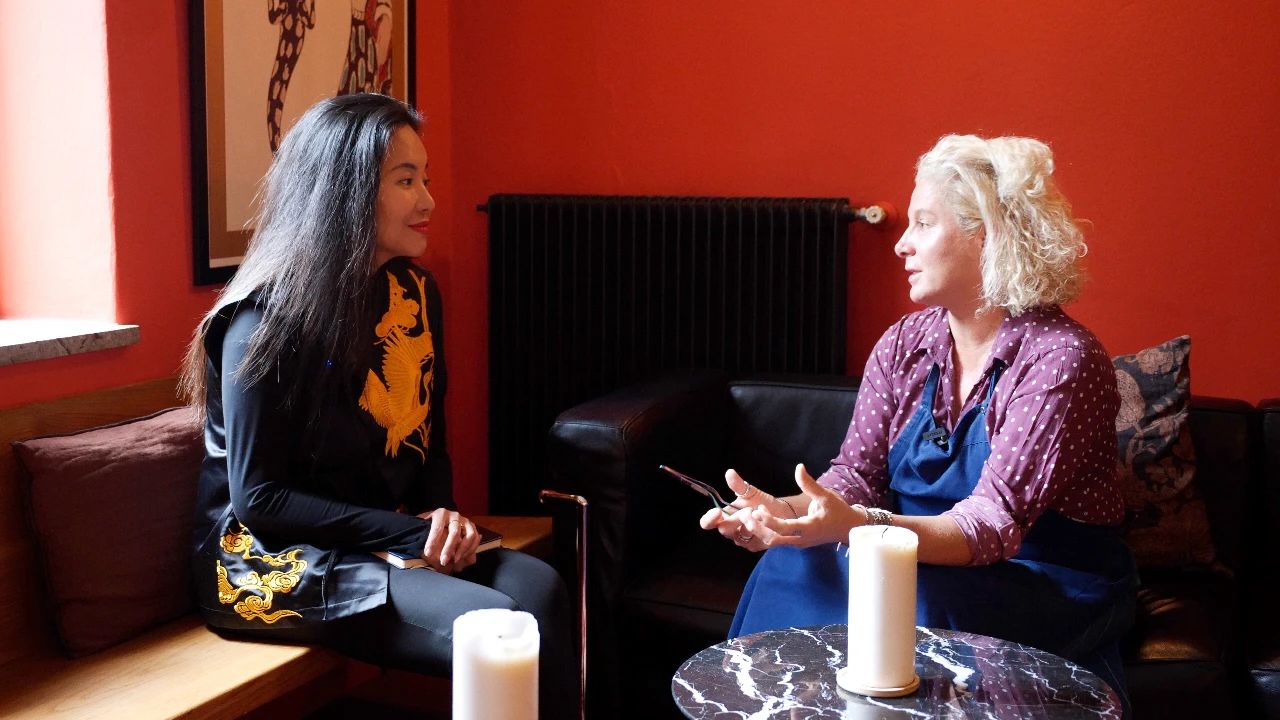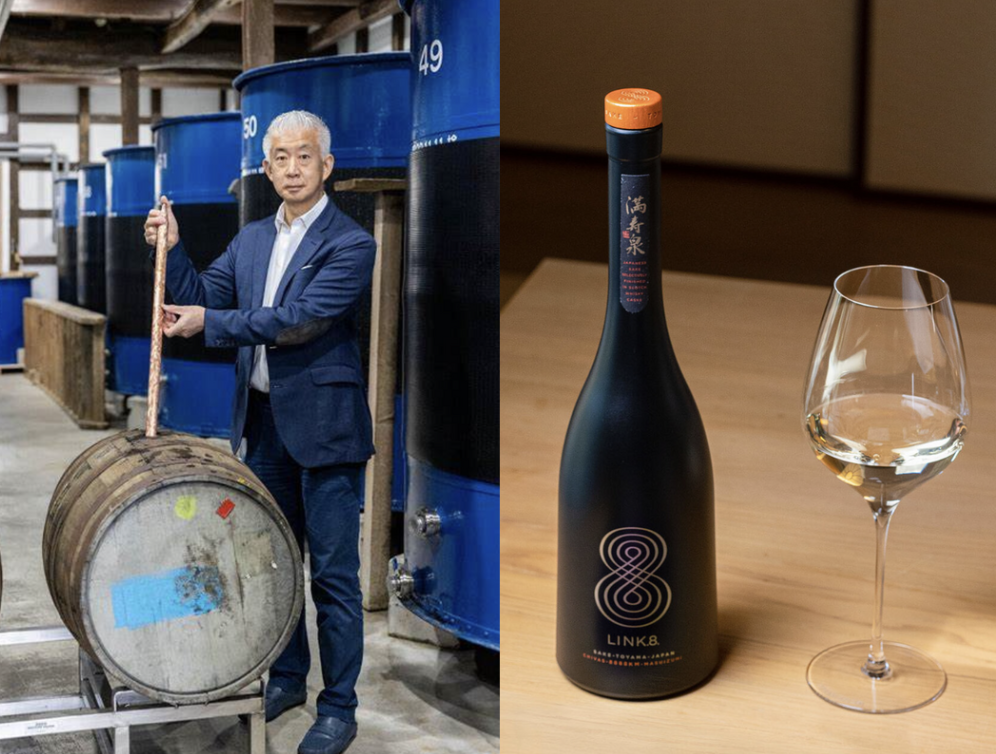At the end of June, I made my third visit to Narisawa Tokyo, a restaurant named after Chef Yoshihiro Narisawa, and it’s also a first time visit after it’s been renovated with an open kitchen. During its revamp this March, the whole kitchen team went to Singapore for a pop-up while preparing for the opening of the Shanghai venue.
@TastyTrip YouTube
As a world-famous French-inspired Japanese restaurant, Narisawa remains in the list of the World’s 50 Best for the last consecutive 14 years. It was crowned No. 1 in the Asia’s 50 Best 2013 and became the first Japanese restaurant to enter the World’s 50 Best in 2015. As the soul of the restaurant, Chef Yoshihiro Narisawa has dedicated all his time and energy to the growth of Narisawa.
More and more Japanese restaurants are starting to enter these lists in recent years. Narisawa says he is very much delighted to see this trend, which he believes is a reflection of people’s love for Japanese cuisine, and a recognition of the efforts paid by Japanese restaurants to drive innovation, to create new flavours and experience. He also realizes that as a chef, his influence is growing. By sharing information and focusing on important social and environmental issues, he hopes to raise people’s awareness on addressing these challenges by taking the lead in making positive changes.
Pioneer of Sustainability
As the chef and owner of a restaurant, Narisawa san is committed to continuously improving the quality of food by using safe and healthy ingredients, as well as prioritizing food sustainability to protect the environment. These principles are the cornerstones of the restaurant.
Compared to today’s restaurants where sustainability is frequently talked about, Narisawa set up a seminar almost ten years ago to discuss the relationship between Japanese cuisine and nature, covering topics like forest regeneration, preservation of the natural environment and food culture. It is safe to say that Narisawasan is clearly an internationally celebrated chef who has created a lifelong mantra when it comes to sustainable culinary art.
Sustainability in Life
When talking about sustainable cooking, we always talk about food sustainability. However, Narisawa san also wants to talk about sustainability in life, in other words, a person’s sustainable development. At Narisawa Tokyo, they mostly open for lunch, and for dinner they only accept reservations starting at 5.30pm, so that staff can leave work early and enjoy family time. When I dined at Narisawa Shanghai, I found the kitchen was all cleaned up and ready for tomorrow at 10pm. This is a very rare practice in the restaurant industry and I was deeply moved.
I once discussed this topic with a Japanese food journalist. In Japan, there are often very high expectations for chefs. And in order to meet such expectations and to honour professional morals, chefs normally work in the kitchen throughout the restaurant’s opening hours. But pressure at work and potentially long working days are posing serious challenges to the physical and mental health of chefs.
Narisawa’s approach to running the restaurant creates a more sustainable and healthy work environment. In addition to pursuing excellence, Narisawa cares about the well-being of staff, and helps them build a work-life balance.
Shanghai Venue
Narisawa’s branch in Shanghai opened on the 15th of July. Talking about chef’s decision to open this new branch, he mentioned that after studying Japanese culinary culture, he found that Chinese culture has had a great influence on Japan, such as the influence of tea and Buddhism on Japanese dietary habits. He has a deep respect for Chinese culture, and hopes to gain a deeper understanding of it and expresses appreciation through his cuisine. I also heard that Narisawa san used to visit a Chinese restaurant run by a Shanghainese chef almost every week in Tokyo, and his strong interest in Shanghai has led him to use Chinese techniques in his cooking. That became part of the reason for the restaurant in Shanghai.
The experience starts with Hiki Sakazuki, which is a laquer cup/ plate used to drink sake during a formal tea ceremony. Using this plate signifies the start of an important meal and it reproduces the beautiful Japanese traditional ceremony to welcome important guests. Next up is the renowned Bread of the Forest. It features a butter with a poetic name, accompanied by olive and vegetable powder – the moss. Using the wild yeast from Shirakami Mountains, the bread dough goes through its last phase of fermentation on the table right in front of the guests. By showing this process, guests are allowed to capture the actual function of the microbes and to acknowledge their existence. The world we live in is replete with these microbes that are not visible to the naked eyes. Forest in summer, the bread has subtle notes of citrus fruit.
 “Bread of the Forest 2010”·Moss
“Bread of the Forest 2010”·Moss
Next is a delightful and refreshing appetiser of sea urchin from Hokkaido and Junsai(watershield) from Hiroshima, perfect for a summer day. The brioche is a combination of Fukuoka’s watari crab and caviar from the Thousand Island Lake. Aori squid from Toyama is rolled up and deep-fried in tempura style until crispy on the outside and tender inside, a perfect doneness that reminds me of the squid sushi! Narisawa Shanghai also serves this dish with squid from Fujian, and it’s a dish that best replicates its Tokyo counterpart. The Wanmono is kuruma shrimp from Saga, scallop from Hokkaido and winter melon from Aichi, showcasing the beauty of pure, original flavours.
 AoriSquid, Toyama
AoriSquid, Toyama
Speaking of Wanmono, many people may wonder what genre do the dishes in Narisawa belong to. In the 1980s, Narisawa san spent eight years in European restaurants learning authentic French cuisine under the tutelage of renowned Swiss chef Fredy Girardet and the late French master chef Joël Robuchon. In 1995, he dove straight in upon his return to Japan to open La Napoule in Odawara, Kanagawa Prefecture. The restaurant’s remote location didn’t prevent people from all over Japan to have a taste of its authentic French flavours. Chef Narisawa tells me that one of the things that he’s been doing in recent years is that he hopes to express Japanese culture through his dishes. He would want to keep pursuing changes rather than sticking to a certain genre.

The well-balanced menu is designed based on the logic of Japan’s geography and environment. The World’s Best Restaurant 2023 – Central in Peru, also uses the concept of altitude to design their menu. Chef Narisawa is also working on adapting Satoyama culture with Chinese cuisine.
One dish that I particularly like on the menu is the eggplant. The Gion Festival of Yasaka Shrine in Kyoto is one of the biggest festivals in Japan. It begins on the 1st of July and lasts for the entire month. The festival was originally held in order to ward off plague-causing demons. Using Kamonasu eggplant, one of the representing vegetables of the summer as a main ingredient, the dish expresses the brilliant and shiny appearance of the Summer Festival. Such a highly complete vegetable dish, the frying techniques plus the eggplant puree, I was tempted to learn! You can order this one at Narisawa Shanghai as well.
 “Gion Festival”
“Gion Festival”
Narisawa’s ayu is a dish I always look forward to, and it is a splitbetween the bones and the meat of the fish this year. The revamp of the Tokyo restaurant has not only seen its décor changed, but an evolution of the menu once again. Regarding the ayu dish, the ayu they use is from Waragawa River in Gifu Prefecture. Above the location where the ayu resides, there is no civilization, which means the fresh water is very clean. Considering how clean the water is, it produces one of the best mosses, which is what the ayu feeds on. The ayu sandwiches sobanomi (buckwheat) and the liver of ayu with the aosa (seaweed). The outside of the ayu is wrapped in tofu skin, coated in Japanese rice cracker and deep-fried. The bamboo leaf is laid under the dish because there is bamboo on both sides of the Waragawa River. The bamboo leaf and the colorful dish are inspired by the Tanabata Festival, which is also a summer festival. On top of the ayu is the fish bone deep-fried at a low temperature until it becomes very crispy. The two sauces on the side use rice koji, the enzyme to make sake, which gives sweetness. The pink sauce uses pickled plum, and the green sauce uses shiso and tade, which is a wild leaf found on the side of the river and gives acidity. There is also the Japanese citrus sudachi. It brings out the slight but wonderful bitter flavour of summer, and in a way, it’s the dreamy taste I look forward to every summer when I visit Japan! The dish is a micro ecosystem on a plate, and if you think about it, it’s really a masterpiece.
 Ayu, Gifu
Ayu, Gifu
For the main course “Luxury Essence”, they use langoustine from Shizuoka. Before opening the restaurant, Narisawa san had a longtime friendship with a local fisherman. No matter how much fish is in the catch, Narisawa san would buy the whole catch on the fishing boat. The practice carries on even when there is an earthquake, and that’s how much they trust and treasure each other. In the basement of the restaurant, there is an aquarium for langoustines to live in. A luscious signature soup dish that draws some of the inspiration from Chinese cooking, langoustine is freshly cooked and served with crunchy garden peas, sitting in a umami soup stewed for 8 hours with iberico pork from Kawashima, aged chicken from Miyazaki and Italian Parma ham.

Rosy seabass from Yamaguchi is paired with Kyoto rice, charcoal grilled and seasoned to perfection, with crispy skin and tender meat. The last main course is grilled pigeon from Ibaraki. Desserts are Kagoshima brown sugar cake with pomelo ice cream, Okinawan mango with Kagoshima passion fruit sauce. The final Japanese wagashi is Shizuoka matcha jelly, red beans and Toyama’s monaka cake. The first dessert and the wagashi can be enjoyed in Shanghai as well. That day I met my gourmet friend Takefumi san and we visited together Narisawa’s lab on the same street. It was heartwarming to see Narisawa san’s mentorship and guidance for the younger generation of chefs.
Chef’s Aspiration
Narisawa san was born in Aichi Prefecture and grew up near the shores of Ise Bay. He is a surfer and enjoys being close to nature. This is reflected in his naturalistic cuisine. Narisawa says it is no longer sufficient to serve incredible cuisine; you have to take environmental issues and food sustainability into account as well. He believes that cooking is a process of pursuing a natural way of life and experiencing the rhythm of shifting seasons. He thinks that people should be encouraged to treat the planet as sacred and take responsibility for our future.
Tel: +81 3-5785-0799










